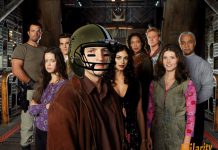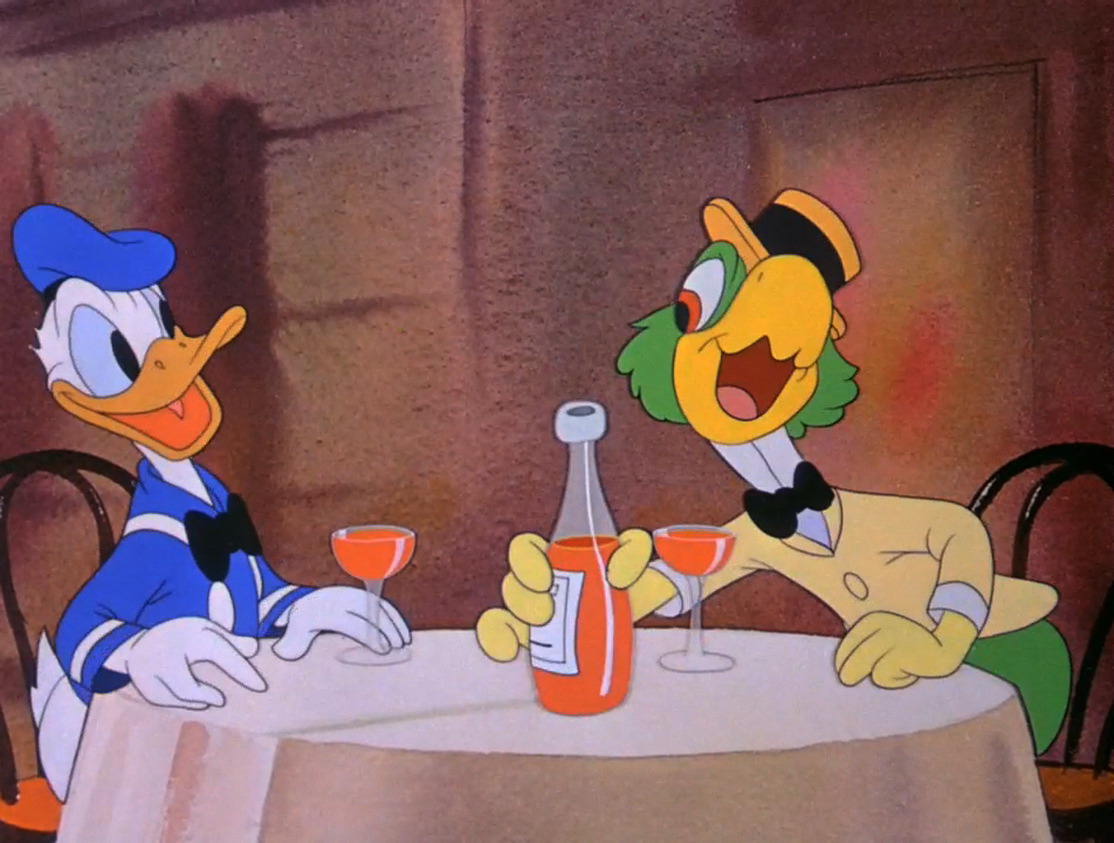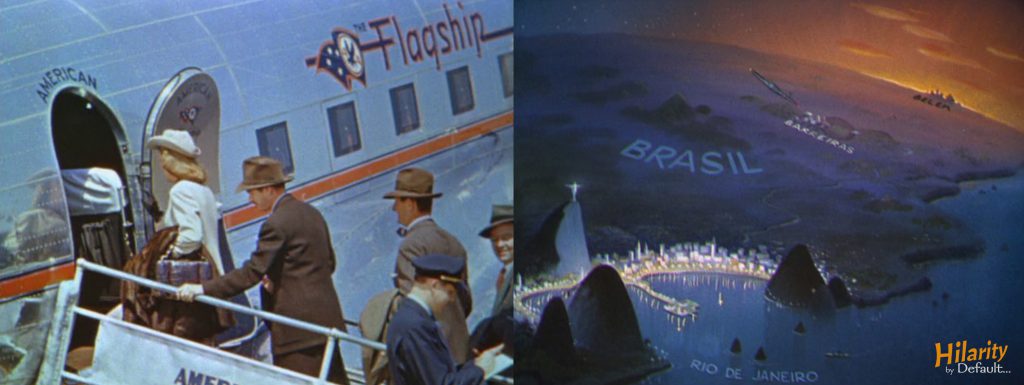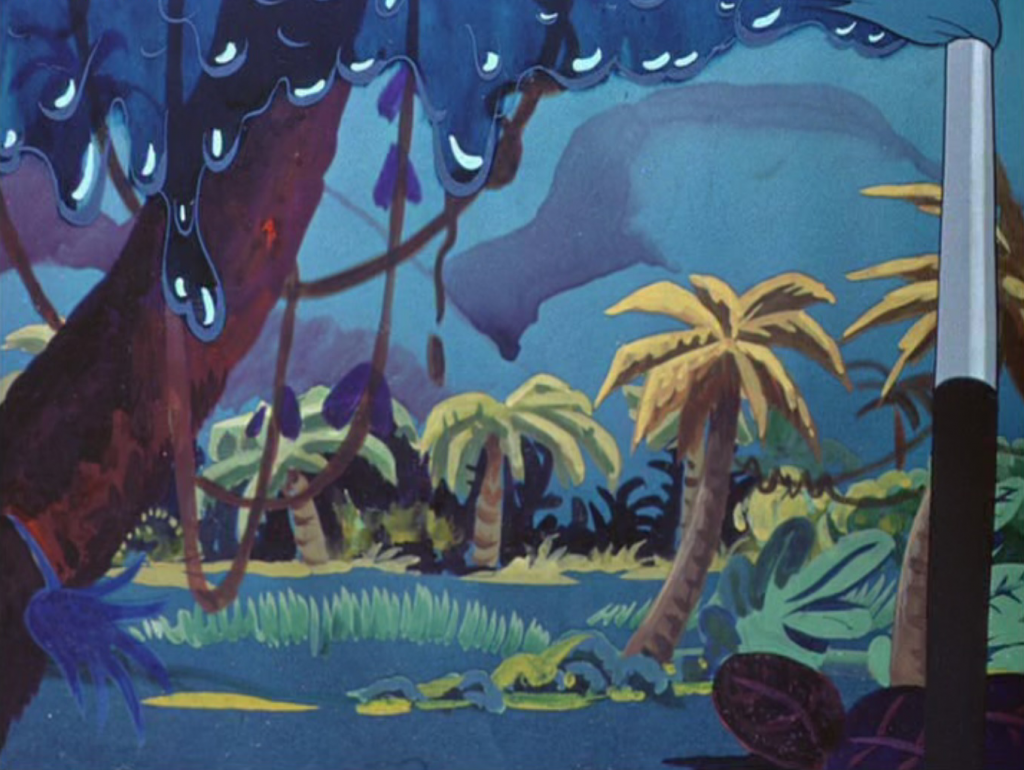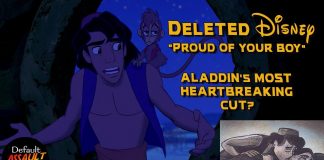Saludos Amigos set quite a few milestones for the Walt Disney Studios. It was the first of the six package features released during the 1940’s. It was the first and only film in the animated canon that Walt Disney made a personal appearance in (his appearance in The Reluctant Dragon notwithstanding since it’s not technically part of the canon). It is the only film in the series to date whose title is entirely in a different language (translated, “Saludos Amigos” means “Hello Friends” in Spanish). It is also Disney’s shortest film, clocking in at 42 minutes (that’s shorter than the average episode of “MacGyver”).
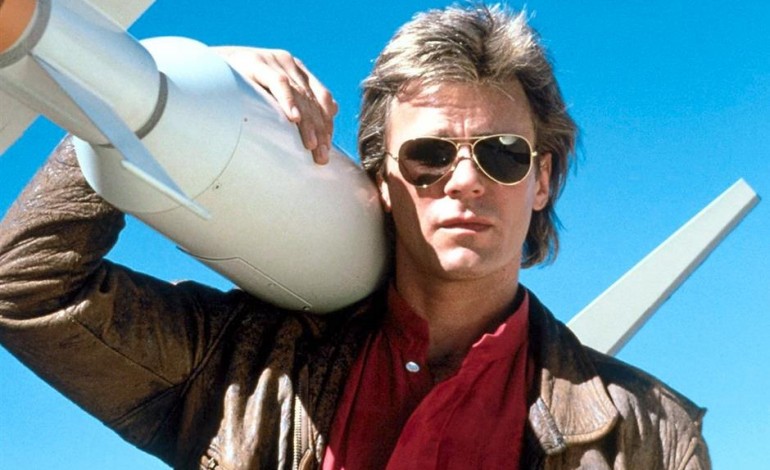
Most importantly, it was the first of two films that Walt Disney produced as part of a goodwill program to Latin America during World War II. In the effort to expand President Franklin D. Roosevelt’s Good Neighbor Policy and to impede South American governments from allying themselves with Nazi Germany, the U.S. Department of State contracted the Disney Studios to create a film that could strengthen the United States’ relationship with the southern continent. The federal loans provided were much needed by the financially ailing studio and the program also allowed Walt an easy escape to South America in the midst of the arduous Disney labor strike.
After it premiered in Rio de Janeiro (the first Disney film to have its opening outside of the United States, yet another “first”) it did well enough to justify a followup with the far more ambitious The Three Caballeros. More of a companion film than a sequel, The Three Caballeros offered a much wilder immersion of the colors and music of Latin America than the more sedate travelogue of Saludos Amigos.
The fact that Disney selected Donald Duck, the one character that no one can quite understand with the bombastic temper to boot, to be the diplomatic spokesman to South America in both films seems ludicrous in retrospect. However, given the Duck’s worldwide popularity at the time, the choice was logical and, to be fair, he provided a more relatable, every-man (or every-duck?) persona. Besides, there were far worse Disney characters that could have been picked as ambassadors…
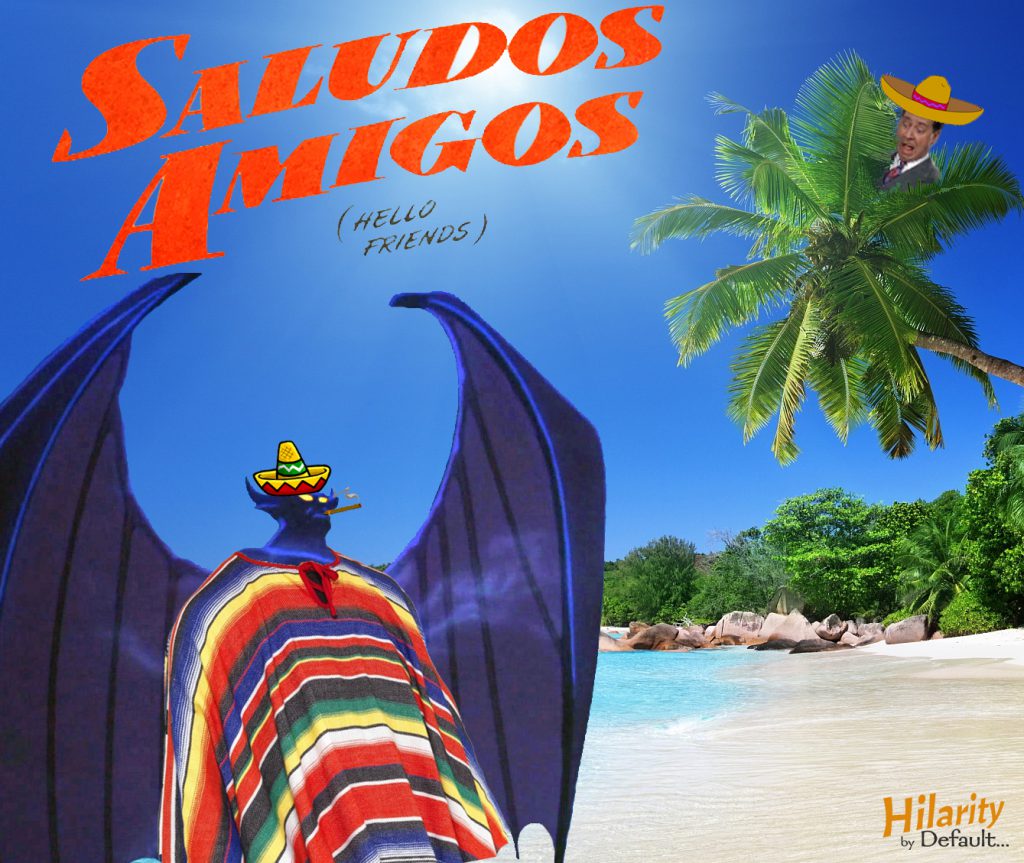
Walt Disney’s Saludos Amigos |
Saludos Amigos is comprised of four different animated shorts linked together by live-action footage of Walt Disney and his animators visiting various Latin American countries and cities. Unlike most of the Disney package features headlined by multiple short cartoons, Saludos Amigos is structured very well and only gets better as it goes along, leading up to a bright, energetic climax. Plus, with the inclusion of established Disney characters like Donald Duck and Goofy, the film proves to be an entertaining, yet somewhat unspectacular, distraction.
Amigos opens with the Disney animators boarding a plane to commence their tour of Latin America. As their animated plane takes off, we are treated to a quick overview of their flight-plan.
The animated plane would become a recurring framing device between the film’s four segments as it acquainted audiences with South American geography which, should be noted, was rather obscure to a percentage of Americans at the time. For many it was an unexpected realization that there even were modern cities and technologies south of the border.
Lake Titicaca |
2.0
|
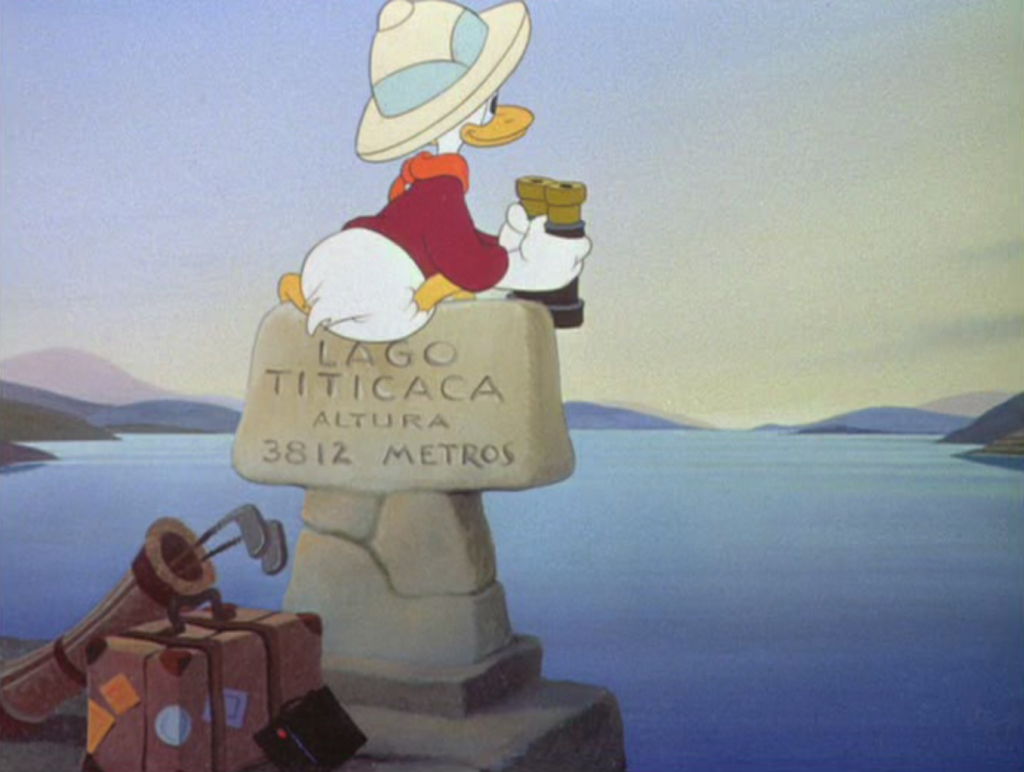 The first short, “Lake Titicaca,” would cement the travelogue/edutainment approach of the film. It begins with live action footage of Lake Titicaca village, establishing the various set pieces that will be presented in the animated portion of the sequence. While the grainy, home video-style footage leaves much to be desired, it still provides an interesting snapshot of what life was like there at the time. Meanwhile, the narration (provided by Disney regular Fred Shields) regales us with wise aphorisms like “yes, a llama can make you feel awfully unimportant.”
The first short, “Lake Titicaca,” would cement the travelogue/edutainment approach of the film. It begins with live action footage of Lake Titicaca village, establishing the various set pieces that will be presented in the animated portion of the sequence. While the grainy, home video-style footage leaves much to be desired, it still provides an interesting snapshot of what life was like there at the time. Meanwhile, the narration (provided by Disney regular Fred Shields) regales us with wise aphorisms like “yes, a llama can make you feel awfully unimportant.”
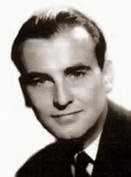
The humor of the narration is much more effective when combined with the animation. The dead pan descriptions juxtaposed with the animated visual puns are the strength of the “Lake Titicaca” short and would be used to greater effect later in the film in the “El Gaucho Goofy” segment.
Otherwise, “Lake Titicaca” is a pedestrian Donald Duck cartoon as the Duck takes a tour of the village before ending up on a perilous suspension bridge with a dogmatic llama. There are a number of good jokes but nothing that truly sets this apart from any other run-of-the-mill Donald cartoon released at the time. For the most part, Donald has always been far more effective when he is reacting to other characters and situations rather than driving them himself. Thankfully, he would be used much more favorably in the film’s final sequence and in The Three Caballeros.
There is a nice touch introduced here where we see the animators formulate various concepts that would be finalized in the cartoon through their sketches and drawings. Examples would be a quick sketch of a man playing a flute that would eventually become the basis of a little boy who can direct his llama by performing different melodies…

…or a few caricatures that capture a whimsical viewpoint of Latin American culture.
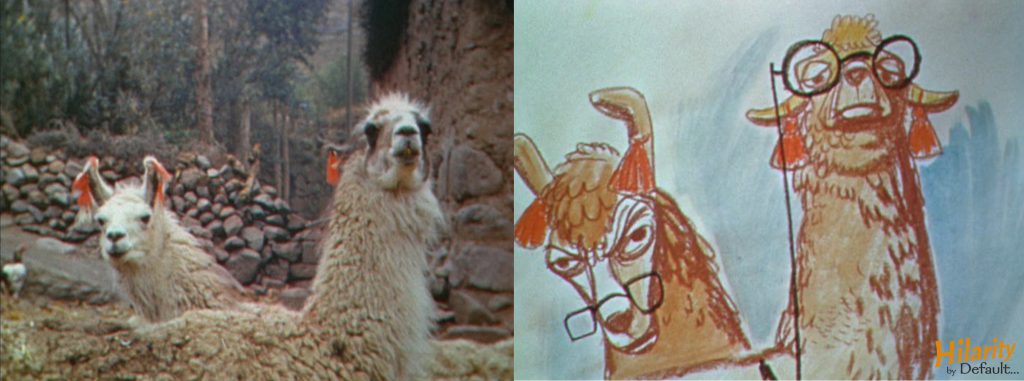
This technique would help kick off the following animated shorts and effectively bridge the gap with the live action travelogues.
Pedro |
2.5
|
“Pedro” stands out in Saludos Amigos in that it’s the only cartoon that doesn’t star an already established Disney character. It makes up for it with some clever gags and the best animation in the film as it chronicles the story of a small, baby airplane from Chile named Pedro. One day when his father gets sick, he has to take his place and pick up a mail delivery in Mendoza by crossing a perilous mountain pass. After a few comic hijinks as Pedro battles a furious storm, he eventually makes it back home in a rather average, though chaste, ending. Predictable as “Pedro” may be, the final gag involving the mail’s contents being a single “having a good time” postcard is quite amusing.
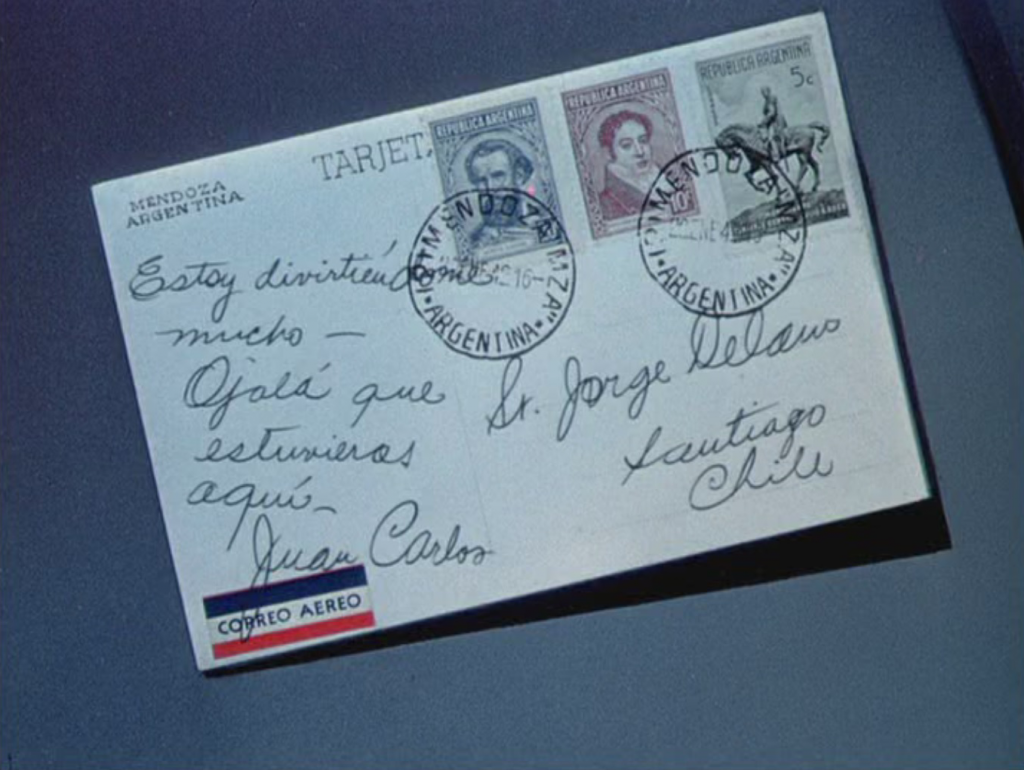
While the animation of Pedro himself is expressive, the short lacks the charm and whimsy that it desperately tries to attain. The few witty jokes and interesting point-of-view shots barely compensate for a simplistic and non-engaging story. Furthermore, only the geography and occasional shot of something written in Spanish keep “Pedro” from being entirely irrelevant from the rest of the picture.
On a side note, those who found the human-less world of Pixar’s Cars creepy may find this short equally daunting. There are many parallels between the two projects and especially with Cars‘ godawful spin-off – Planes. Everything in “Pedro” is anthropomorphic, from the planes to the airport searchlights, without a human being in sight (save for some stamps seen at the end – make sense of that, why don’t you?). To top it off, considering the following example of airplane anatomy…
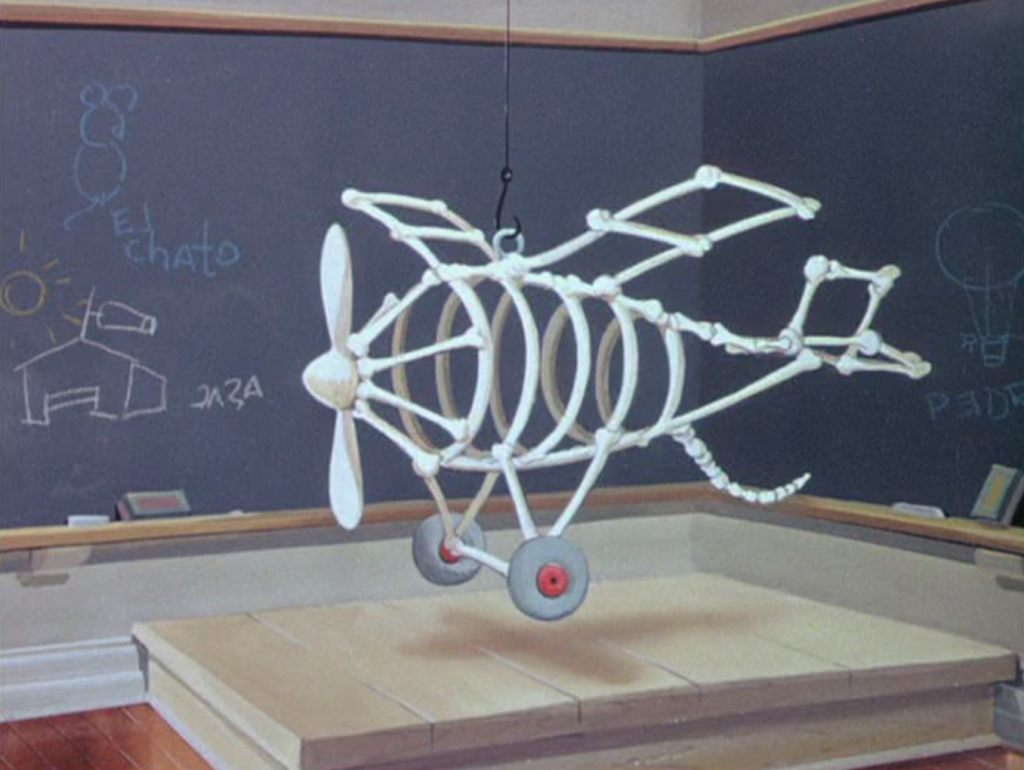 …it has to be asked where exactly does this place potential passengers? In the digestive bellies of airplanes? Is this how mankind was wiped out in the world of Cars? Were they all eaten by planes?
…it has to be asked where exactly does this place potential passengers? In the digestive bellies of airplanes? Is this how mankind was wiped out in the world of Cars? Were they all eaten by planes?
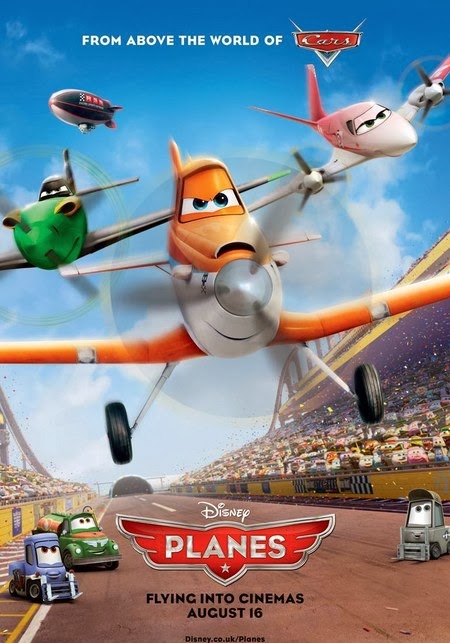
Shenanigans aside, “Pedro” is a step up from “Lake Titicaca” but it wasn’t until the following segment that Saludos Amigos eventually found its stride.
El Gaucho Goofy |
4
|
Our posse of Disney animators continue their South American tour with their penultimate stop – Argentina. Here, we briefly see Walt himself as he and the animators become enlivened by the lifestyle of the Argentinian Pampas. Comparing the gauchos of the Pampas to the North American cowboy, inspiration hits and we are presented with the short that marks the true turning point in Saludos Amigos.
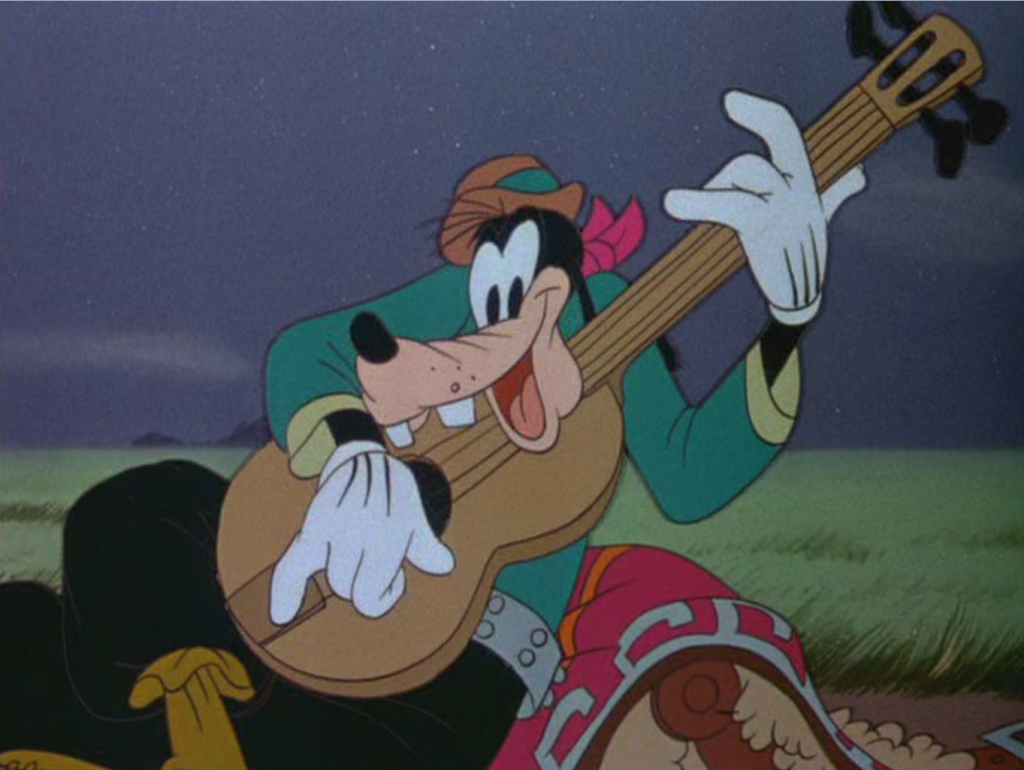 “El Gaucho Goofy” is a big leap in the the right direction. It has a crackling energy, some hilarious gags, and great music. Focusing on the daily life of the Argentinian gaucho through the trials and tribulations of Goofy, the short achieves its educational quota while providing an uproarious dose of comedy. Goofy really shines here impressing the most effective use of his character in any Disney feature to date. The pace zips along and the humor never lets up – heck, even its scene transitions are quite funny.
“El Gaucho Goofy” is a big leap in the the right direction. It has a crackling energy, some hilarious gags, and great music. Focusing on the daily life of the Argentinian gaucho through the trials and tribulations of Goofy, the short achieves its educational quota while providing an uproarious dose of comedy. Goofy really shines here impressing the most effective use of his character in any Disney feature to date. The pace zips along and the humor never lets up – heck, even its scene transitions are quite funny.
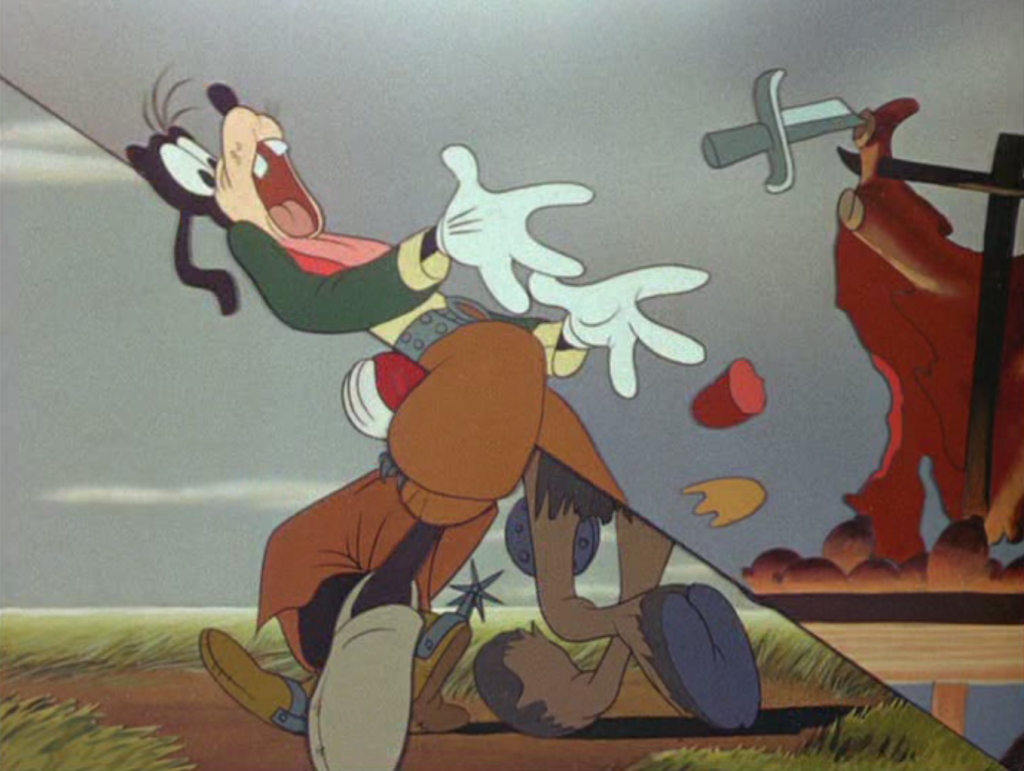
When compared to the thematically similar “How to Ride a Horse” from The Reluctant Dragon, “El Gaucho Goofy” blazes past it on every level imaginable serving only to highlight all the missed opportunities and inventiveness lacking in the previous feature.
However, “El Gaucho” has become a bit controversial in recent years. The Disney home video release was censored to remove an instance of Goofy, as the North American cowboy at the beginning of the short, smoking a cigarette. Not only does this create an odd flourish of Goofy’s now cigarette-less hand and a distracting jump cut to the next scene, but it’s odd that in a film full of smoking only this one scene is edited. Almost every time we see the Disney animators, there’s always one smoking whether they’re indoors, outdoors, or even while on the airplane.

Heck, even Walt Disney is smoking in his one scene in the movie.

This wasn’t the only instance of Disney editing a film specifically for cigarettes. The more infamous example is the censorship of Pecos Bill from Disney’s Melody Time – another case of smokes disappearing from an animated cowboy.
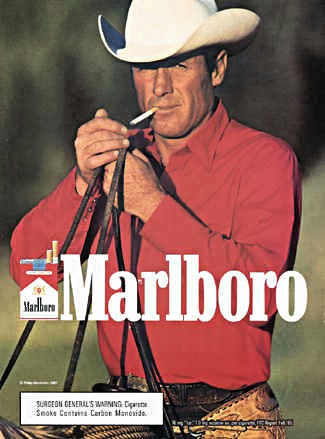
What’s particularly puzzling is that the smoking of cigars is for the most part left alone by the censors in these early Disney features. This is probably due to the general public’s more lenient views on cigars but it is no less hypocritical. Then again, since so many early Disney characters smoke cigars, the expense of digitally erasing them all would be quite outrageous.
So while José Carioca can puff away to his heart’s delight…
…poor Goofy’s cigarettes are taken away. One is left to speculate if the film would have avoided any censorship at all had Goofy only smoked cigars.
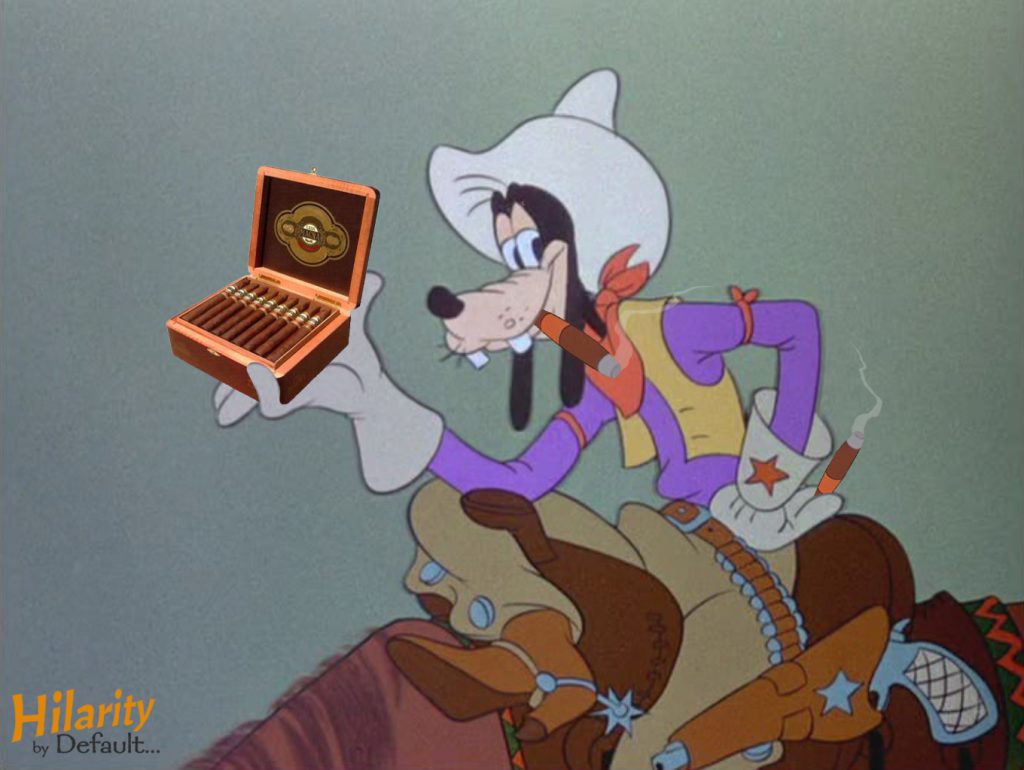
Aquarela do Brasil |
4.0
|
“Aquarela do Brasil” is the best segment of Saludos Amigos and it clearly paved the way for the follow-up film, The Three Caballeros. It has a kinetic drive, vibrant use of color and music, and the right balance of merry travelogue and atmospheric hilarity that is lacking through most of the picture with the exception of “El Gaucho Goofy.”
“Aquarela do Brasil” is introduced on a blank canvas as an animated paint brush adds splashes of watercolor that bring the scene to life. Scored to the memorable song of the same name (appropriately translated as “Watercolor of Brazil” in English and better known to many as simply “Brazil”), this opening sequence is the most elaborate scene in the film.
Towards the end of the sequence, Donald Duck is added to the equation in the most mind-bending manner possible as an odd looking flower swallows a random bee and transmogrifies into the famous duck.

Thankfully, the introduction to José Carioca is much less bizarre. After viewing his inspiration in the live action footage preceding the short, the paint brush draws his outline and with an added dash of color, we are greeted by the smoothest, most enjoyable new Disney character in the film.
The antithesis of Donald Duck, José Carioca is a calm, confident character enlivened by his adoration of the samba beat in his every movement. It’s no surprise that he would go on to appear in two more Disney features (The Three Caballeros and Melody Time – plus a cameo in Who Framed Roger Rabbit). His topical friendship with Donald signals the essence of Disney’s goodwill program while not downplaying their differences. This is seen, for instance, in an amusing gag about the physical interaction between cultures as Donald approaches José with a handshake only to be practically assaulted by hugs.
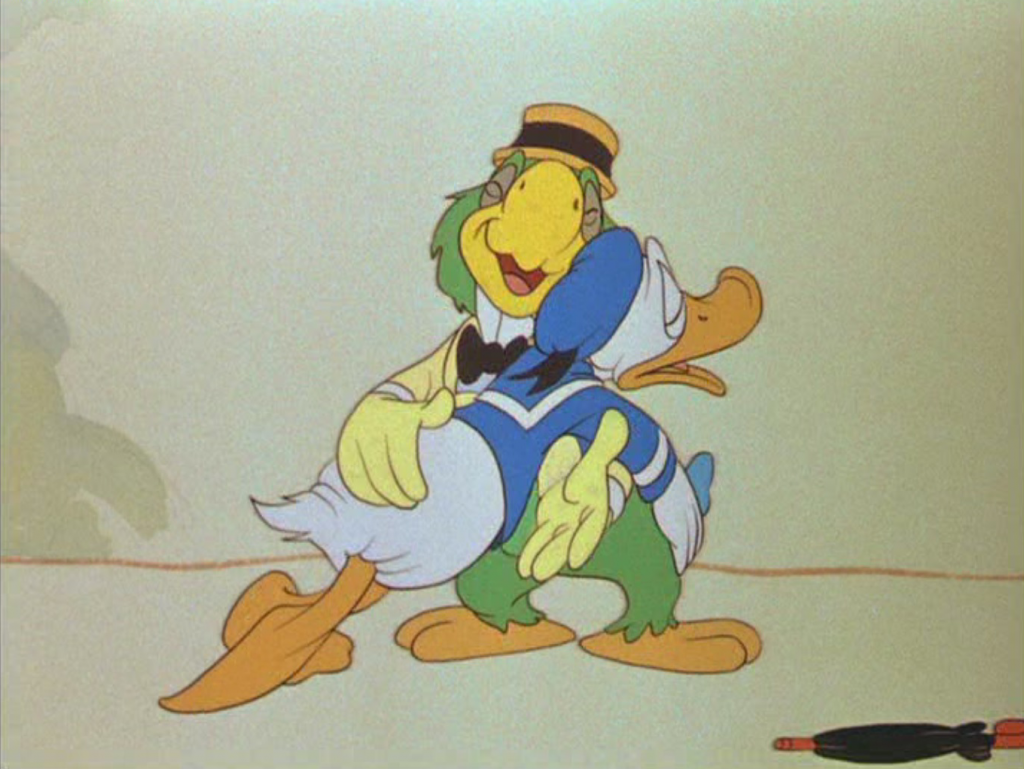
José takes Donald on a short tour of Rio de Janeiro, once again calling back to the live action footage which inspired the short. They visit a local café, experience the local intoxicants, and conclude the evening in Rio’s dance halls.
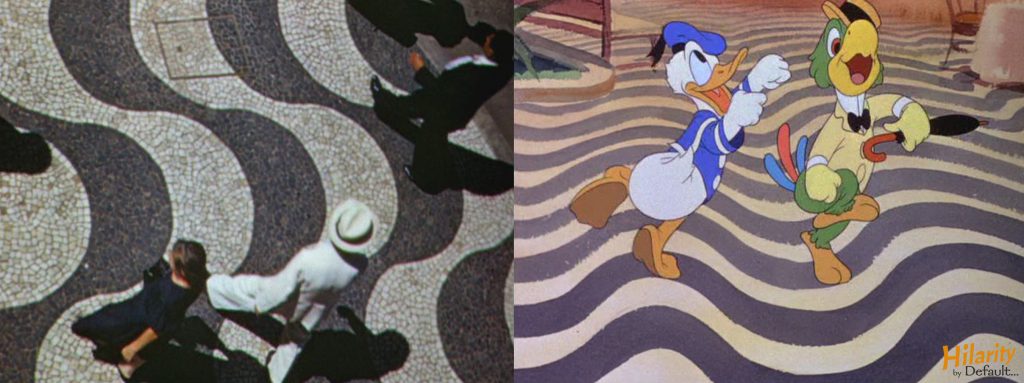
If there is one failing point in “Aquarela do Brasil” (and henceforth Saludos Amigos as a whole), it’s that just as the tempo picks up, the film suddenly ends. It is such an anticlimax that it almost subdues the charm of “Aquarela.” As if Disney realized this deficiency, the ending to the follow-up Three Caballeros played to the other side of that spectrum featuring a conclusion that doesn’t let up at all and eventually drags that film down as well. To be fair, if there’s one crime that “Aquarela do Brasil” commits, it’s that it leaves the viewer wanting more and that isn’t necessarily a bad thing.
Final Thoughts |
Probably in part due to its short length which keeps the focus a little more concise, Saludos Amigos is one of the best Disney package features. Though the four segments are different in nature and style, they complement each other well with only “Pedro” seeming the odd one in the bunch.
In hindsight, Saludos Amigos is much more staid than the aggressively toned The Three Caballeros. Playing more like an episode of Disneyland rather than a theatrical feature, Amigos is the kind of Disney film that we are likely never going to see again; yet, its amusing, laid back tour of the culture, music, and rhythm of Latin America mark it as a charming but overall underwhelming Disney diversion.
Man-Card Retribution |

As am I, Disney trolls, as am I.
Man-Card Retribution: Status Quo
Random Afterthoughts… |
This is the second Disney film to feature Walt Disney, Goofy, and Donald Duck without Mickey Mouse (the other being The Reluctant Dragon). The Mouse’s popularity had waned in the forties to the point where the short cartoons in his own namesake series mostly focused on other characters. He had been embraced by audiences to the point that Walt had trouble crafting stories around him that the public would accept. Subsequently, it’s remarkable to realize that José Carioca was actually featured in more of the Disney film canon during Walt’s lifetime than Mickey himself!
Is it just me, or is Goofy’s relationship with his horse a bit too comfortable? Just how lonely were these gauchos anyway?
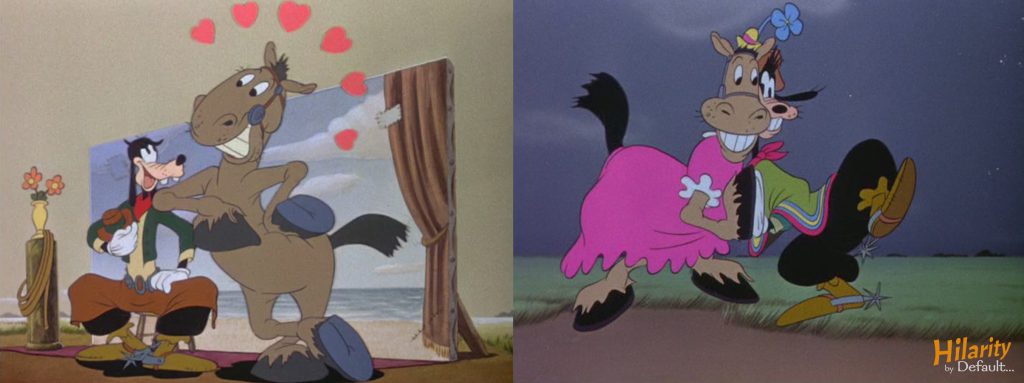
Oddly enough, the enduring song, “Aquarela do Brasil” (written by Ary Barroso and performed by Aloysio De Oliveira) was considered a failure when it was first released a few years earlier. With its exposure through Saludos Amigos, it became an international hit and has been noted as the first Brazilian song to be played on the U.S. radio over a million times. Yet, having grown up watching Amigos, the song’s association with the animated flick became quite ingrained to me. When I eventually saw Terry Gilliam’s Brazil, which uses the song to a great extent within its score, I could not overcome the mental connection to dancing ducks and parrots which, as you can guess, devolved into a wholly surreal experience…
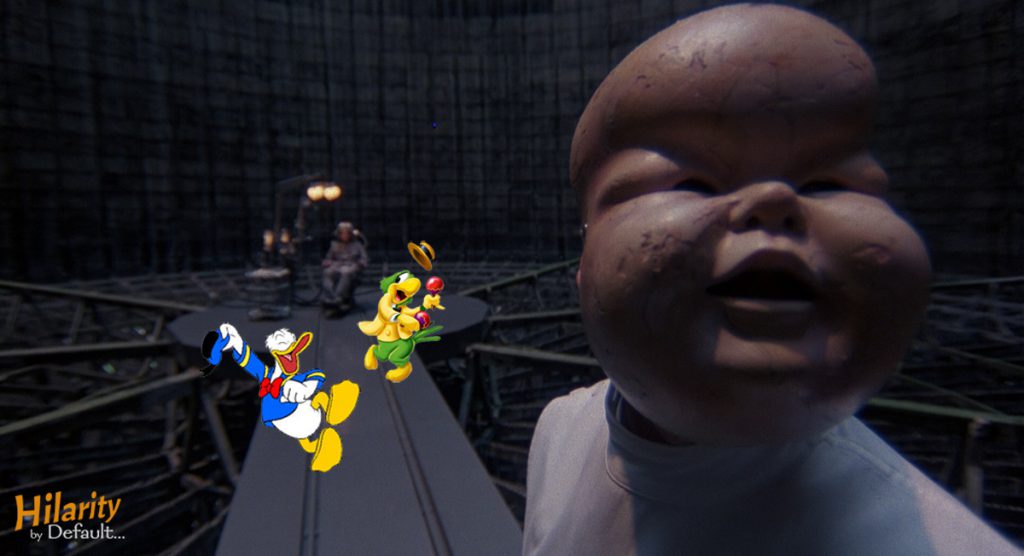

Next time, Donald Duck returns…as a Nazi in the infamous “Der Fuehrer’s Face!” For more Default Disney, click here.












